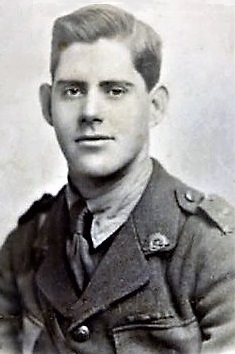STAPLETON, Claude Augustine
| Service Number: | 481 |
|---|---|
| Enlisted: | 27 April 1915, Original of B Company |
| Last Rank: | Captain |
| Last Unit: | 26th Infantry Battalion |
| Born: | Charters Towers, Queensland, Australia, 13 March 1894 |
| Home Town: | Charters Towers, Charters Towers, Queensland |
| Schooling: | Christian Brothers College Charters Towers |
| Occupation: | Station hand |
| Died: | 2 February 1974, aged 79 years, cause of death not yet discovered, place of death not yet discovered |
| Cemetery: | Not yet discovered |
| Memorials: |
World War 1 Service
| 27 Apr 1915: | Enlisted AIF WW1, Sergeant, 481, 26th Infantry Battalion | |
|---|---|---|
| 27 Apr 1915: | Enlisted AIF WW1, Sergeant, 481, 26th Infantry Battalion, Original of B Company | |
| 24 May 1915: | Embarked Sergeant, 481, 26th Infantry Battalion, HMAT Ascanius, Brisbane | |
| 24 May 1915: | Involvement Sergeant, 481, 26th Infantry Battalion, --- :embarkation_roll: roll_number: '15' embarkation_place: Brisbane embarkation_ship: HMAT Ascanius embarkation_ship_number: A11 public_note: '' | |
| 16 Aug 1916: | Promoted AIF WW1, Second Lieutenant, 26th Infantry Battalion | |
| 9 Dec 1916: | Promoted AIF WW1, Lieutenant, 26th Infantry Battalion | |
| 25 Jul 1918: | Promoted AIF WW1, Captain, 26th Infantry Battalion | |
| 3 Mar 1919: | Involvement AIF WW1, Captain |
Help us honour Claude Augustine Stapleton's service by contributing information, stories, and images so that they can be preserved for future generations.
Add my storyBiography contributed by Stephen Brooks
T/Captain Claude Augustine Stapleton M.C. and Bar, D.C.M., Cross Of St George 4th Class (Russia).
He joined 'B' Company, 26th Battalion, and embarked for Egypt as a sergeant in May. In September he reached Gallipoli where his battalion served the evacuation and it was transferred to the Western Front in France in March 1916.
At Pozières Stapleton twice distinguished himself under fire: on 29 July he led his platoon during an attack; on 4 August, when casualties were heavy, he assumed command of his company. 'He was most energetic and determined throughout in defending his own particular area and was especially prominent in helping to repel counter-attacks.' For his leadership, he received the Distinguished Conduct Medal and the Russian Order of St George. On 16 August 1916 he was commissioned second lieutenant.
While commanding a platoon in the miserable, winter-bound trenches near Flers, Stapleton was promoted lieutenant in December.
During the attack on Lagnicourt on the 26 March 1917, he commanded a party which cleared the eastern outskirts of the heavily defended village; with survivors from his platoon, he established a post and—under orders from Captain P. H. Cherry—held his position during fierce enemy counter-attacks; for two hours the squad repelled assaults from three sides. Stapleton was awarded the Military Cross. He was wounded in action during April 1917.
At Morlancourt on 9 June 1918 he was again wounded, but remained on duty. On 25 July 1918 he was made temporary captain. In the war's closing operations Stapleton again 'showed great courage and able leadership' on the Beaurevoir line when, on 3 October, he cut a path through German entanglements, enabling his men to advance. He then led a party against a machine-gun post and put the gun out of action, for which he won a Bar to his M.C.
Back in Queensland in 1919, Stapleton became a soldier settler, growing pineapples at Glasshouse Mountain and supplementing his income by seasonal cane-cutting. He married during 1922 and worked as a health inspector for the local shire council at Ayr. In World War II he was appointed an instructor in jungle warfare and held several training appointments until June 1945.










